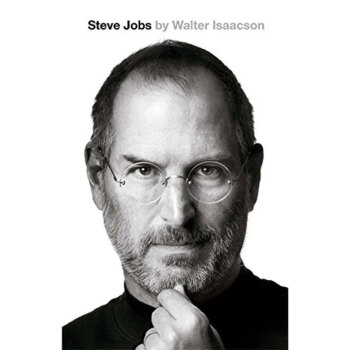![Cosmos 英文原版 [平装]](https://pic.tinynews.org/19523894/54696f57N08de095e.jpg)

具体描述
内容简介
RETURNING TO TELEVISION AS AN ALL-NEW MINISERIES ON FOX "Cosmos" is one of the bestselling science books of all time. In clear-eyed prose, Sagan reveals a jewel-like blue world inhabited by a life form that is just beginning to discover its own identity and to venture into the vast ocean of space. Featuring a new Introduction by Sagan's collaborator, Ann Druyan, full color illustrations, and a new Foreword by astrophysicist Neil deGrasse Tyson, "Cosmos" retraces the fourteen billion years of cosmic evolution that have transformed matter into consciousness, exploring such topics as the origin of life, the human brain, Egyptian hieroglyphics, spacecraft missions, the death of the Sun, the evolution of galaxies, and the forces and individuals who helped to shape modern science. Praise for "Cosmos" "Magnificent . . . With a lyrical literary style, and a range that touches almost all aspects of human knowledge, "Cosmos" often seems too good to be true."--"The Plain Dealer" "Sagan is an astronomer with one eye on the stars, another on history, and a third--his mind's--on the human condition."--"Newsday" "Brilliant in its scope and provocative in its suggestions . . . shimmers with a sense of wonder."--"The Miami Herald" "Sagan dazzles the mind with the miracle of our survival, framed by the stately galaxies of space."--"Cosmopolitan" "Enticing . . . iridescent . . . imaginatively illustrated."--"The New York Times Book Review"作者简介
Carl Sagan served as the David Duncan Professor of Astronomy and Space Sciences and Director of the Laboratory for Planetary Studies at Cornell University. He played a leading role in the Mariner, Viking, Voyager, and Galileo spacecraft expeditions, for which he received the NASA Medals for Exceptional Scientific Achievement and (twice) for Distinguished Public Service.His Emmy- and Peabody–winning television series, Cosmos, became the most widely watched series in the history of American public television. The accompanying book, also called Cosmos, is one of the bestselling science books ever published in the English language. Dr. Sagan received the Pulitzer Prize, the Oersted Medal, and many other awards—including twenty honorary degrees from American colleges and universities—for his contributions to science, literature, education, and the preservation of the environment. In their posthumous award to Dr. Sagan of their highest honor, the National Science Foundation declared that his “research transformed planetary science . . . his gifts to mankind were infinite.” Dr. Sagan died on December 20, 1996.,,,,
精彩书评
“Magnificent . . . With a lyrical literary style, and a range that touches almost all aspects of human knowledge, Cosmos often seems too good to be true.”—The Plain Dealer“Sagan is an astronomer with one eye on the stars, another on history, and a third—his mind’s—on the human condition.”—Newsday
“Brilliant in its scope and provocative in its suggestions . . . shimmers with a sense of wonder.”—The Miami Herald
“Sagan dazzles the mind with the miracle of our survival, framed by the stately galaxies of space.”—Cosmopolitan
“Enticing . . . iridescent . . . imaginatively illustrated.”—The New York Times Book Review
用户评价
拿到这本《Cosmos》平装版,它的份量并不轻,翻开扉页,扑面而来的就是一种知识的厚重感。卡尔·萨根的写作风格,简直像是一场智慧的盛宴。他不是那种只关注事实和数据的作者,而是能够将科学与哲学、历史、艺术巧妙地融合在一起。我尤其欣赏他在书中对人类历史和文明的宏观审视,他将科学的进步置于人类文明发展的宏大背景下,让我们看到科学是如何塑造了我们的过去,又将如何影响我们的未来。书中对“生命起源”的探讨,让我对地球生命的独特性有了更深的认识,也引发了我对地外生命存在的无限遐想。他那种对宇宙的敬畏之心,以及对人类智慧的赞美,都深深地感染了我。读这本书,就像是与一位博学睿智的长者进行了一次深邃的对话,每一次阅读都能有新的感悟和启发。
评分《Cosmos》这本英文原版,真的是一本让我爱不释手的书。萨根的文字,有一种独特的魔力,能够让最枯燥的科学理论变得引人入胜。他用一种近乎诗意的语言,描绘出宇宙的壮美与神秘。我最喜欢的是他对于“宇宙中的生命”的探讨,他不仅仅是讨论可能性,更是用科学的逻辑和严谨的推理,让我们看到生命存在的普遍性。他提醒我们,不要因为渺小而放弃探索,也不要因为浩瀚而感到绝望。这本书让我重新审视了自己,也重新审视了我们所处的世界。我常常会在夜深人静的时候,捧着这本书,抬头看看夜空,想象着书中所描述的那些遥远的星系,感觉自己与整个宇宙融为一体。它给我带来了巨大的启迪,也让我对科学探索的精神有了更深刻的理解。
评分《Cosmos》英文原版,这绝对是一本我愿意反复阅读的经典。萨根的文字功底毋庸置疑,他能够将最前沿的科学发现,用最生动、最形象的语言传递给读者。我最深刻的体会是,他不仅仅是传播知识,更是在播撒一种探索的精神。他在书中反复强调“我们都是星尘”,这句话的含义,我需要花时间去慢慢体会。从地球上微小的生命,到遥远星系的光辉,他将这一切巧妙地联系在一起,展现了宇宙的壮丽与生命的奇迹。我特别喜欢他对于“宇宙学”这个词的阐释,它不仅仅是关于星星和行星,更是关于我们如何理解自身在整个宇宙中的地位。这本书让我对科学产生了前所未有的亲近感,那些曾经让我望而却步的理论,在萨根的讲解下,都变得如同眼前一般清晰。它激发了我对更多科学知识的渴望,也让我开始主动去思考一些深刻的问题。
评分刚拿到这本《Cosmos》,就迫不及待地拆开了包装。它的平装版本虽然没有硬壳那样厚重,但纸张的质感和印刷的清晰度都非常不错。我一直对宇宙充满好奇,但总是被各种专业术语吓退。萨根这本书的语言风格,真是让人惊喜!他用一种非常平易近人,甚至有些俏皮的方式来讲解那些听起来高深莫测的物理定律和天文现象。读到关于行星形成的部分,我感觉自己仿佛置身于一个巨大的宇宙熔炉之中,看着尘埃和气体如何一点点凝聚成我们熟悉的家园。他对科学史的叙述也十分精彩,那些伟大的科学家们,在萨根的笔下,不再是枯燥的名字,而是充满智慧和激情的探索者。这本书真的打破了我对科普书籍的刻板印象,它有趣、有料,并且充满了人文关怀。我甚至觉得,它更像是一本哲学著作,引导我们思考生命、意识以及我们在宇宙中的独特性。
评分这本《Cosmos》英文原版给我带来了难以置信的震撼。从第一页开始,我就被卡尔·萨根那博大精深的宇宙观所吸引。他不仅仅是在介绍天体物理学,而是在讲述一个关于我们存在意义的宏伟故事。那种对未知的好奇心,以及试图将复杂概念以如此诗意和易于理解的方式呈现出来,让我觉得萨根简直是一位宇宙的吟游诗人。我花了很长时间沉浸在他描绘的星云、星系和黑洞之中,仿佛亲身穿越了时间和空间。他笔下的文字,充满了对科学探索的热情和对人类潜能的信心,每一次翻页都像是在揭开宇宙更深层的秘密。我尤其喜欢他对于“宇宙的尺度”的描述,那种渺小与宏大的对比,让人不禁思考我们在浩瀚宇宙中的位置。这本书不仅仅是一本科普读物,更是一次心灵的洗礼,它重新点燃了我对科学的敬畏之心,也让我对人类的未来充满了希望。我把它放在床头,随时都会翻开来,汲取其中的智慧和灵感。
评分很不错,一直信赖这个平台!
评分不错,正在阅读之中……!
评分质量还行,但没有超过预期
评分第一次在京东购买原版,感觉非常好
评分很好的东西,很好的东西
评分宇宙……三體……紅紅火火恍恍惚惚哈哈哈哈哈哈哈哈個哈哈
评分科普百科正版图书英文进口图书
评分这本书的纸张非常好,区别于一般小说的那种灰暗的纸张,它的纸张很白,也很有厚度,所以整本书也是有一定的重量。此外,这本书中间似乎还有几张是铜版纸的彩印,很棒
评分印刷还可以,包装一般就一口袋,但是配送小哥特别好
相关图书
本站所有内容均为互联网搜索引擎提供的公开搜索信息,本站不存储任何数据与内容,任何内容与数据均与本站无关,如有需要请联系相关搜索引擎包括但不限于百度,google,bing,sogou 等
© 2025 book.idnshop.cc All Rights Reserved. 静思书屋 版权所有

![Civil War Movie Edition 美国队长3英雄内战电影版 英文原版 [平装] pdf epub mobi 电子书 下载](https://pic.tinynews.org/19631613/570e5c79N96a0312e.jpg)
![Marvel's Captain America: Civil War Prelude 美国队长3 英雄内战前奏曲 英文原版 [平装] pdf epub mobi 电子书 下载](https://pic.tinynews.org/19633536/570e5c81Nb7665b2f.jpg)






![No Fighting, No Biting! (I Can Read, Level 2)不许打架,不许咬人 [平装] [4-8岁] pdf epub mobi 电子书 下载](https://pic.tinynews.org/19004902/550be658N2524ae8b.jpg)
![Do You Want to Be My Friend? Board Book你想成为我的朋友吗?(纸板书) [平装] [2-8岁] pdf epub mobi 电子书 下载](https://pic.tinynews.org/19009030/550be682N15e24865.jpg)
![Motorcycles! (Step into Reading, Step 3)[进阶阅读3:超酷摩托车!] [平装] [5岁及以上] pdf epub mobi 电子书 下载](https://pic.tinynews.org/19016238/d66afcbf-2144-463e-ac80-1659b921655b.jpg)
![National Geographic Readers: Lizards美国《国家地理》杂志-儿童科普分级阅读,第2级:蜥蜴 英文原版 [平装] [5岁及以上] pdf epub mobi 电子书 下载](https://pic.tinynews.org/19037826/55ac8639N329bda81.jpg)
![Beach Babies Wear Shades [平装] pdf epub mobi 电子书 下载](https://pic.tinynews.org/19037944/873c4f48-29bd-483d-b356-aa63fa44d782.jpg)
![I Absolutely Must Do Coloring Now or Painting or Drawing [平装] [3岁及以上] pdf epub mobi 电子书 下载](https://pic.tinynews.org/19138446/04b0d216-e736-436a-abd3-38fa71584410.jpg)
![Diary of a Fly苍蝇日记 [精装] [4-8岁] pdf epub mobi 电子书 下载](https://pic.tinynews.org/19282629/550bf0cbNd4d06287.jpg)
![Who Says That, Cat the Cat? [Board book] [平装] [0-4岁] pdf epub mobi 电子书 下载](https://pic.tinynews.org/19473994/53b4a534N4302013e.jpg)

![Tap the Magic Tree Board Book [04--08] pdf epub mobi 电子书 下载](https://pic.tinynews.org/19663932/5af94fa8N211ee31c.jpg)
![Hey, That's My Monster! [精装] [05--07] pdf epub mobi 电子书 下载](https://pic.tinynews.org/19760817/580f3376N8333c8ed.jpg)
